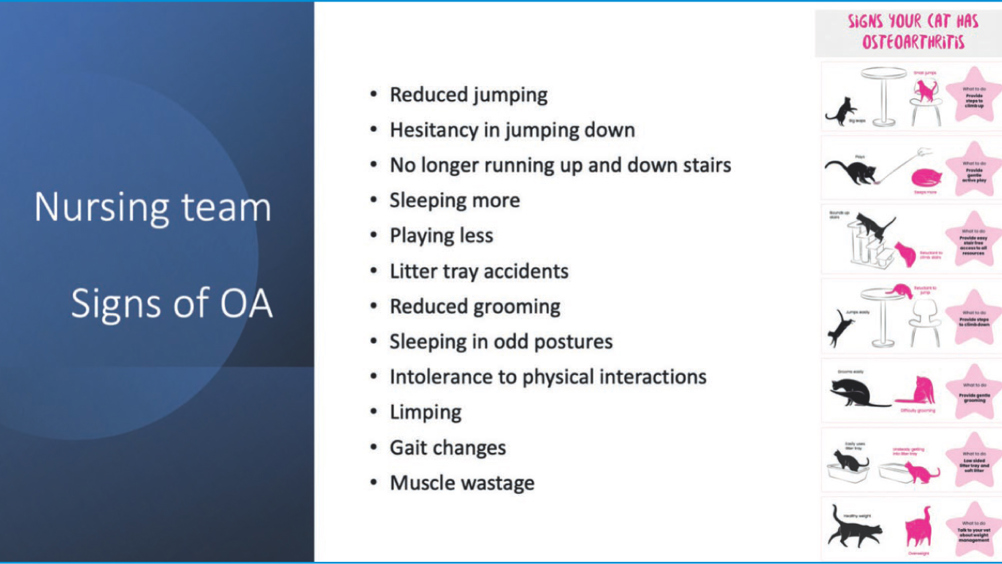Feline osteoarthritis

Abstract
This workshop discussed the prevalence of feline osteoarthritis (OA), how the nursing team can work with cat caregivers and the rest of the veterinary team to recognise and diagnose feline OA, and the role of the nursing team in the on-going management of feline OA
This workshop covered the prevalence of osteoarthritis (OA) in cats, how to raise owner awareness and where the registered veterinary nurse (RVN) can help with diagnosis of OA. It finishes up with the treatment and management of feline OA. Attendees learned about the difference between OA and degenerative joint disease (DJD), and how to recognise that feline OA is not just a disease of elderly cats, but a condition that occurs in all adult cat life stages.
There are a number of options available to raise awareness of OA in cat owners and RVNs can play a key role in this through the creation of educational material for the practice's social media or displays with in the clinic. Additionally, they can start to include feline OA check-lists into their routine appointments with cat owners, to play a more proactive role in screening for this disease. As part of this session attendees learned the wide range of clinical signs that can indicate feline OA (Figure 1) and how these clinical signs may relate to the chronic pain caused by OA rather than the disease itself.
Register now to continue reading
Thank you for visiting The Veterinary Nurse and reading some of our peer-reviewed content for veterinary professionals. To continue reading this article, please register today.

